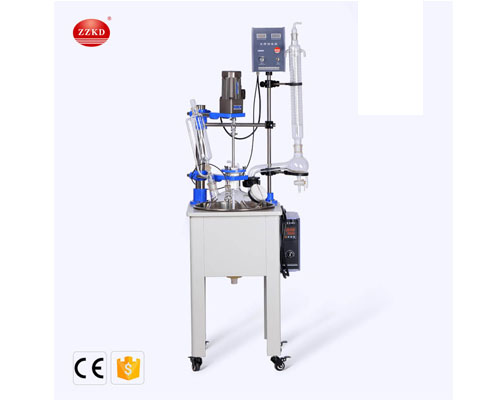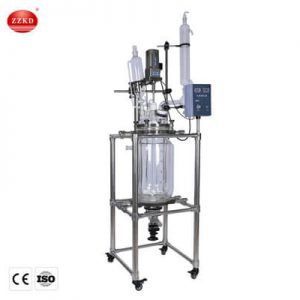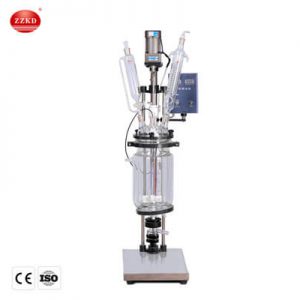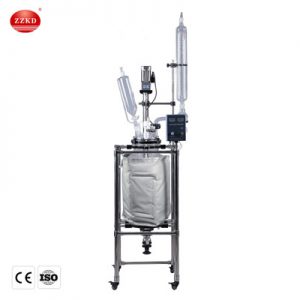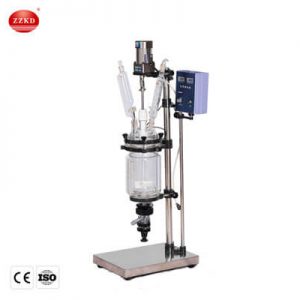Pilot glass reactor introduction
A pilot glass reactor is a type of chemical reactor that is used for research and development, process optimization, and small-scale production in the chemical and pharmaceutical industries. It is designed to allow researchers and engineers to test and optimize chemical processes before scaling them up to larger production volumes.
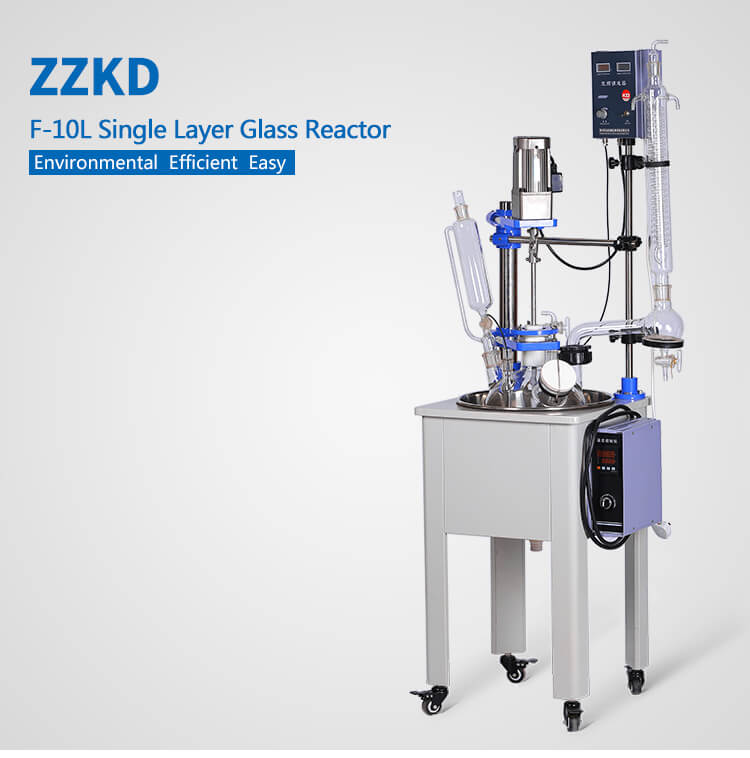
The reactor consists of a glass vessel with a jacket surrounding it that allows for temperature control. The vessel contains a stirrer for mixing and a series of ports for adding and removing materials. The ports can be fitted with various types of fittings, such as valves, thermometers, probes, and sampling devices, to enable precise control and measurement of the chemical process.
The glass construction of the reactor allows researchers to observe the chemical reaction as it occurs, which is essential for understanding the process and optimizing it for larger-scale production. The glass material is also inert and non-reactive, making it ideal for handling a wide range of chemical compounds.
Pilot glass reactors are typically used in the early stages of process development to test and optimize chemical reactions before scaling up to larger production volumes. They are widely used in industries such as pharmaceuticals, chemicals, food and beverages, and cosmetics.
Pilot glass reactor Features:
A pilot glass reactor is a piece of laboratory equipment used for chemical reactions on a larger scale than bench-top equipment. The features of a pilot glass reactor can vary depending on the specific model and manufacturer, but some common features include:
Glass construction: The main body of the reactor is made of high-quality borosilicate glass, which is resistant to chemical corrosion and high temperatures. The glass allows for easy visualization of the reaction inside the reactor.
Jacketed design: The reactor is jacketed to allow for temperature control of the reaction. A heating or cooling fluid can be circulated through the jacket to maintain the desired temperature.
Agitation system: The reactor has an agitation system to mix the reactants and ensure even distribution. The agitation system can consist of a stir bar or an impeller.
Sampling ports: The reactor has sampling ports that allow for samples to be taken during the reaction without opening the reactor. This helps to minimize contamination and maintain reaction conditions.
Pressure relief system: The reactor has a pressure relief system that prevents the pressure inside the reactor from exceeding safe limits. This is important for reactions that generate gases or have the potential to build up pressure.
Instrumentation: The reactor may have instrumentation for monitoring and controlling various parameters such as temperature, pressure, pH, and dissolved oxygen.
Size: Pilot glass reactors come in a range of sizes, typically ranging from a few liters to several hundred liters. The size of the reactor depends on the scale of the reaction being carried out.
Accessories: Pilot glass reactors may come with various accessories such as condensers, reflux systems, and feeding systems to facilitate specific types of reactions.
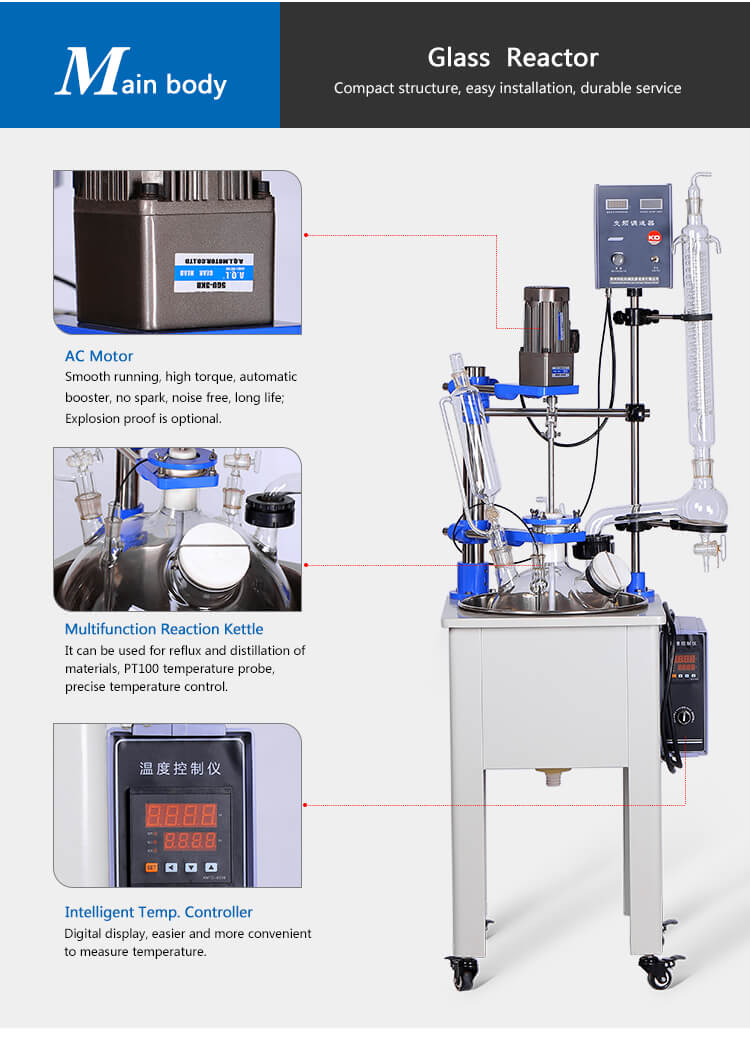
Pilot glass reactor Application:
A pilot glass reactor is a type of chemical reactor that is used for the production of chemicals on a larger scale than in the laboratory. It is typically used in the pharmaceutical, chemical, and petrochemical industries for process development, scale-up, and production.
Some applications of a pilot glass reactor include:
Chemical synthesis: Pilot glass reactors are commonly used for the synthesis of organic and inorganic compounds. These reactors are used to test the feasibility of a chemical reaction before scaling it up for large-scale production.
Process optimization: A pilot glass reactor is used to optimize the process parameters of a chemical reaction such as temperature, pressure, and reaction time to achieve better yield and selectivity.
Scale-up: Once a chemical reaction has been optimized in the pilot glass reactor, it can be scaled up to a larger reactor for production. This ensures that the process is efficient, safe, and environmentally friendly.
Process safety testing: Pilot glass reactors are also used for process safety testing. This involves testing the reaction under different conditions to ensure that it is safe to operate at scale.
Biochemical reactions: Pilot glass reactors are also used in the biotechnology industry for the production of enzymes, vaccines, and other biologics.
Overall, a pilot glass reactor is an essential tool for chemical process development, optimization, and scale-up. Its versatility, safety, and ease of use make it a popular choice for a wide range of applications in the chemical and biotech industries.
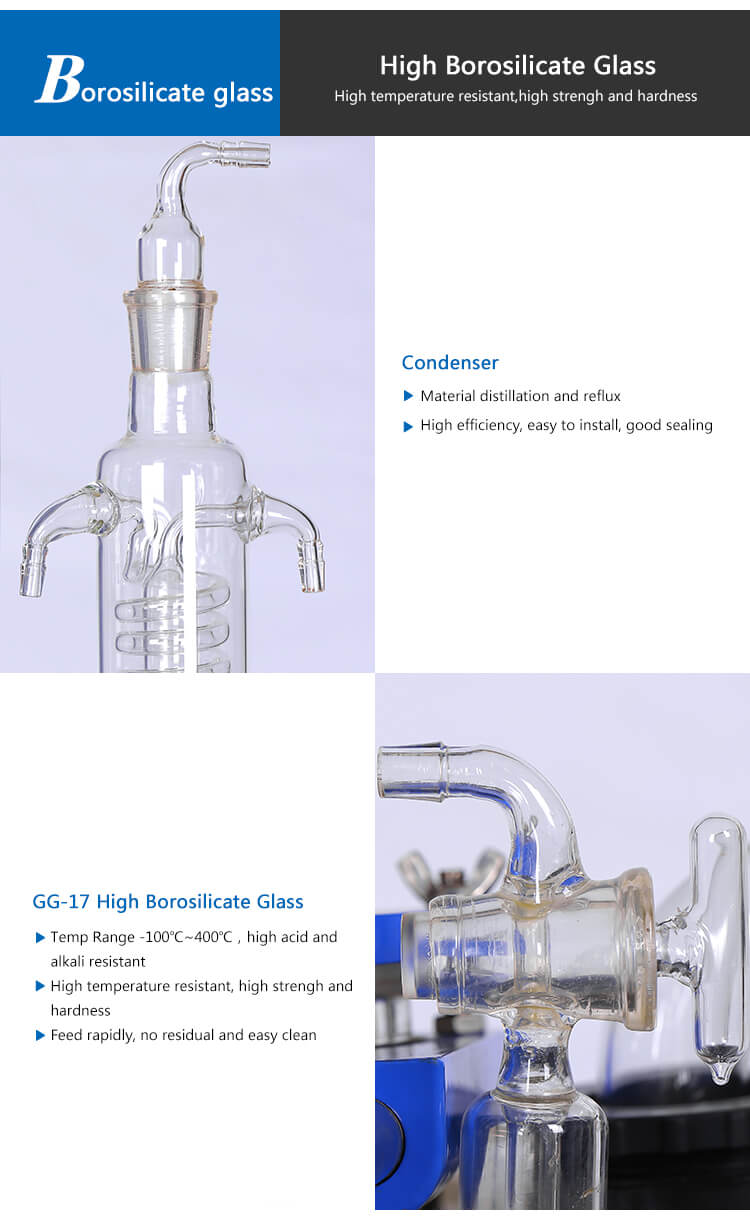
Supporting Equipment for Pilot glass reactor:
DLSB-20/30 Refrigerated Circulator
Storage Volume: 20L
Low temperature range: -30℃~RT
Refrigeration capacity: 246~1845W
Rated Power: 1350W
SHZ-C Water Circulating Vacuum Pump
Power: 370W
Flow(L/min): 80
Lift(m): 12
Max.Vacuum(Mpa): 0.098
Tank Capacity: 50L
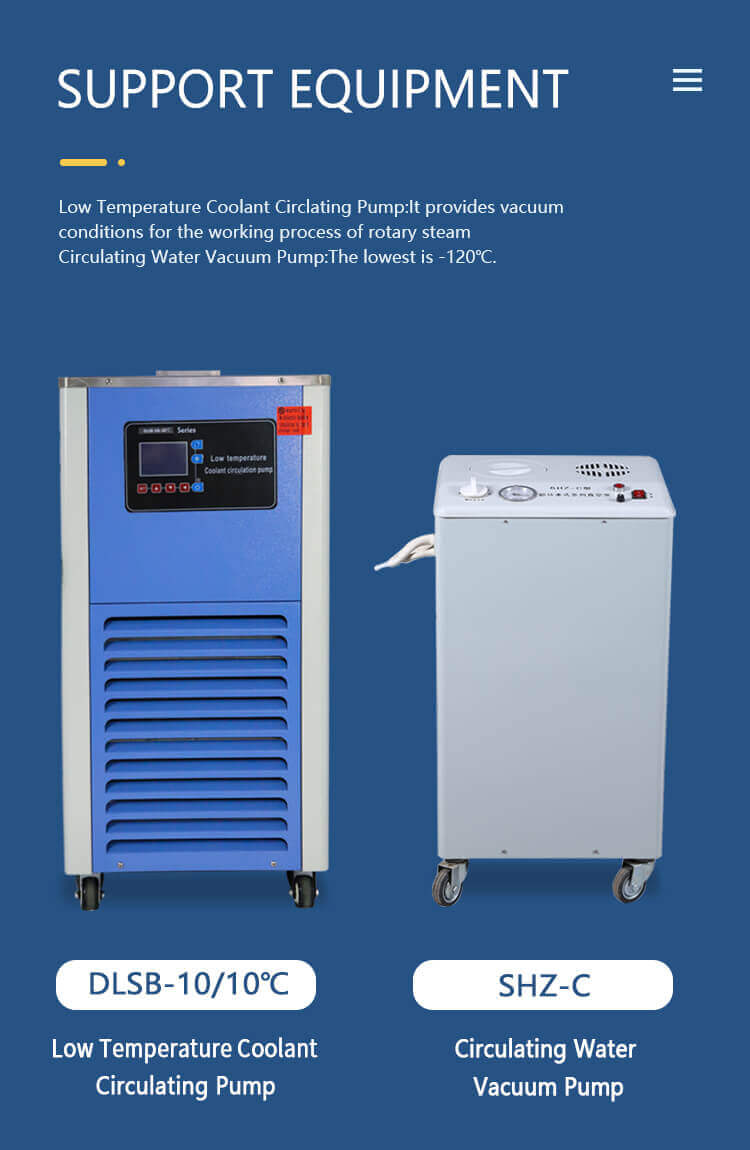
Case : ZZKD Company Selling Pilot glass reactor to an American Customer
ZZKD company, a leading manufacturer of laboratory equipment, recently sold a pilot glass reactor to an American customer. The customer, a research lab in a well-known university in the United States, required a high-quality and efficient pilot glass reactor to conduct experiments and research. The reactor was to be used in the development of new pharmaceutical compounds and chemicals.
After extensive research and evaluation of several laboratory equipment manufacturers, the American customer chose ZZKD company for their reputation in the industry and their ability to provide custom solutions tailored to the customer’s needs. The pilot glass reactor was designed and built to meet the specific requirements of the customer, including a high precision temperature control system, a robust stirring mechanism, and a versatile design that could be used for multiple applications.
Upon receiving the pilot glass reactor, the customer was impressed by the build quality and attention to detail. The reactor was easy to assemble and use, and the temperature control system worked flawlessly. The customer was particularly impressed by the level of customer service provided by ZZKD company, with prompt and knowledgeable support provided throughout the entire purchasing process.
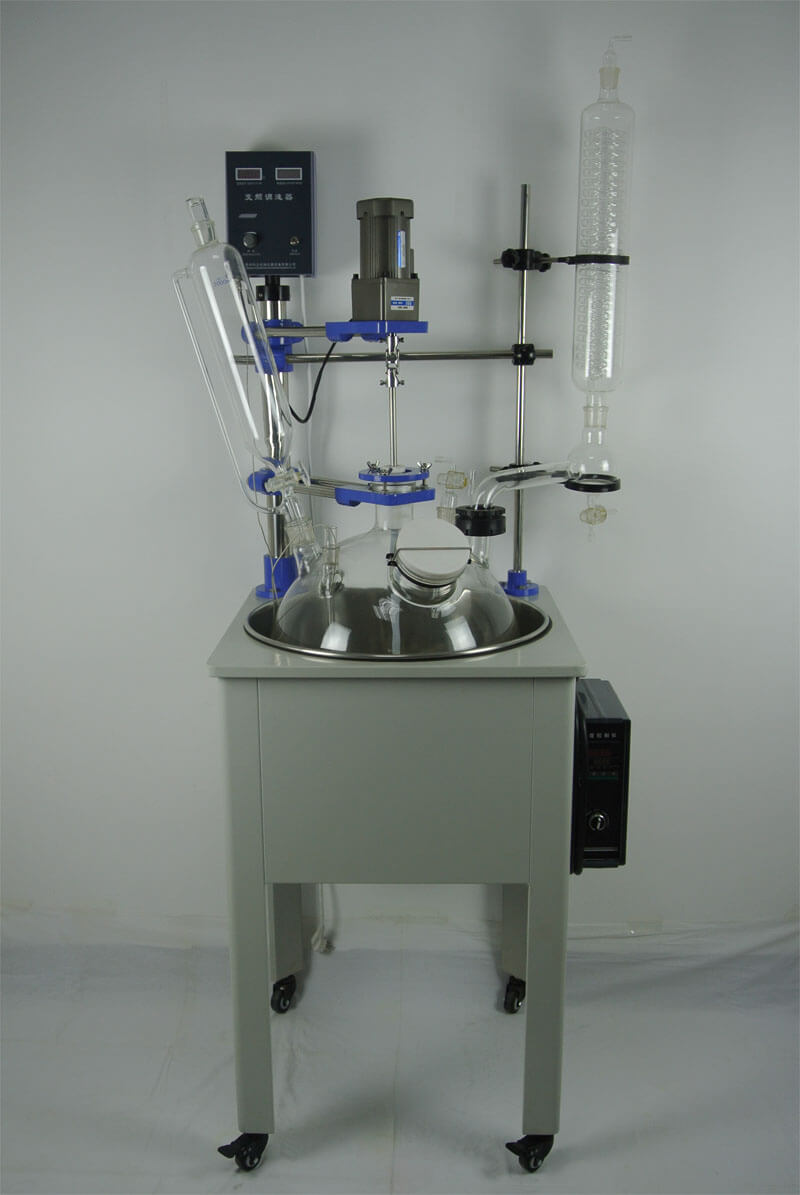
The American customer has since been using the pilot glass reactor for their research and has reported excellent results. The reactor has performed reliably and efficiently, allowing them to carry out experiments with a high degree of precision and accuracy. The customer has also appreciated the reactor’s versatility, allowing them to use it for multiple applications.
In summary, the sale of the pilot glass reactor to the American customer was a success for ZZKD company. The customer was satisfied with the quality of the product, the level of customer service provided, and the reactor’s performance in their research. This positive feedback is a testament to ZZKD company’s commitment to delivering high-quality laboratory equipment and exceptional customer service.

